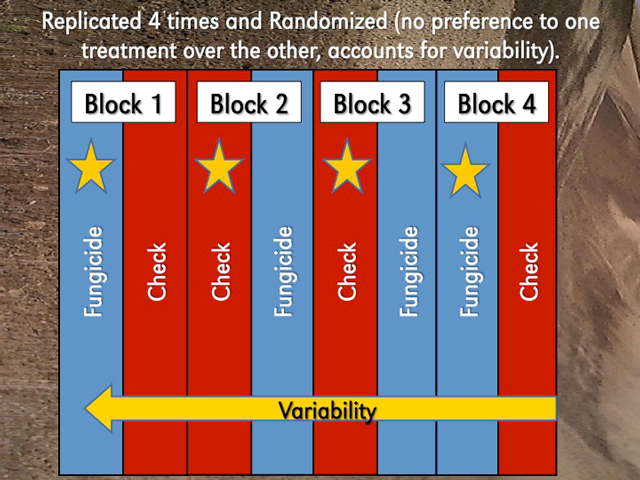Let’s say your original question was “Does applying a fungicide in corn at V5 increase yield and economics?”
Given this question, you would compare two things:
- Untreated check comparison strip
- Fungicide-treated comparison strip
These two strips are compared against each other in blocks that are placed across the field. A block contains one strip of each treatment. (Note: The lengths of strips may vary within blocks.) Blocks are placed in the fields so that treatments within a block have similar conditions with minimal effect on yields from variability within blocks. Much of the field variability occurs between rather than within blocks. Soil and yield maps can be useful in optimizing block placement.
For example, if your field progressively yields better as you move from east to west, use replication and randomization to overcome field variability. This is how it works. One block is a replication. Replication also refers to repeating the treatment blocks, commonly four to six times, across the field (Figure 4).


Fig. 1
Replication provides more data across a field so you can more confidently rely on the yield results. However, replication alone does not minimize field variability as it would always favor one treatment over the other as you move from east to west across the field. In this example, it would favor the westernmost treatment in each block. To correct this, we also need to use randomization. Randomization is used to assign the placement of each treatment within a block to eliminate bias of one treatment over another. The assignment is made by chance such as by using a flip of a coin. In Figure 5 you can see that no preference is given to one treatment over another and randomization helps account for field variability.
Blocking, replication, and randomization are important in addressing field variability and giving us confidence that yield differences are due to treatments. This is especially true in terraced fields. This shouldn’t be considered a roadblock in conducting on-farm research as strip length can be determined separately and subsequent acreage determined.